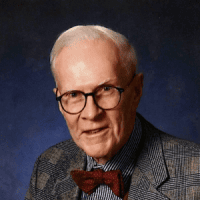This issue of your favorite newsletter covers events during the latter part of October and the first part of November, while it is still reaching members’ mailboxes by mid-December. This period of time this year included a meeting of the Teaching Division Committee, which will be reported at the end of this column, notwithstanding its importance, because it is the last item to squeak past our publishing deadline!
There was considerable activity this fall in our relations with Soviet historians. This was triggered in part by a visit to the United States by a delegation of Soviet historians attending a highly successful conference in the series on the Cold War. The burgeoning of perestroika and the loosening of tight controls over Soviet social scientists has led to a proliferation of excellent program opportunities in most of the humanities and social science disciplines, although it has not been a surprising consequence that there has been a financial squeeze on funding these many attractive projects. The International Research and Exchanges Board (IREX), the central clearing-house, funder, and negotiating partner for the United States, has recently had to extend the timing on many ongoing programs. This has been most painful for participants, and the principal sufferers in history have been the quantitative historians. They were all set to host a delegation of Soviet historians at a conference in December, only to be postponed late in the game to a yet-to-be-chosen date next year.
The Association is not involved directly, but its executive directors have served ex officio as chairs of the IREX subcommission on history and archaeology, so we have been breaking the bad fiscal news to our Soviet interlocuteurs. We will also have to defer the previously planned Seventh Colloquium of Soviet and American historians in Moscow from this winter to next summer to ease further our U.S.-side financial squeeze.
On the domestic front, we are assisting the Association of American Colleges in a large project to study the undergraduate major in colleges and universities for many arts and sciences disciplines, including history. That has entailed several meetings and calls to a number of broadly representative history departments to encourage their cooperation.
Another long-range activity that regularly engages headquarters staffs’ attention at the year’s end is the beginning of negotiations looking toward our 1991 annual meeting (1989 sees us in San Francisco and 1990 in the Big Apple). A three-year lead time is practically last-minute in the convention business, but we find that it increases our leverage powerfully in negotiating room rates with desperate hotels not yet booked for a convention and seeking earnestly. We are in the early stages of exploring a possible return to Washington, D.C. in 1991, but will, as is our custom, seek attractive offers from such other cities as Chicago and Baltimore on the principle—may the cheapest skate win! Such discussions are of course carefully cleared with the Council of the Association as they develop. Members may be interested in this bit of procedural minutia, since the end product of the process is bargains like the $39 and $40 single room rates in Cincinnati this year.
Headquarters staff regularly spends a certain amount of time “showing the flag” for history. Columbus Day 1988 produced two such occasions. The executive directors of the AHA and the OAH, as well as Professor Helen Nader, chair of our Committee on the Quincentennial, were included in an East Room ceremony. The White House over the last generation or so has become much more polished in mounting colorful and tasteful ceremonial events—forty years ago we remember seeing a wistful line-up of firetrucks with their ladders forming an arch in an effort to add panache to a state occasion. Many Washingtonians can recall the Nixon White House’s attempt to produce ceremonial uniforms for a palace guard! On Columbus Day itself we provided a representative to travel to Lexington, Virginia for a talk and question period at the George C. Marshall Library and Institute on the state of history and the humanities in the late ’80s. The meeting was well attended by history department members from both Virginia Military Institute and Washington and Lee University.
A call by the Romanian Embassy’s departing cultural officer to introduce his successor gave us an opportunity to make representations concerning reports of the Romanian government’s plans to close down and remove many historic villages in the western part of their country. Our own central European specialists share the alarm of the anthropologists and ethnographers at these plans, and we are coordinating our views closely with the American Anthropological Association. What modest influence we wield is a result of our hospitality to Romanian historians at the last two annual meetings, at which they presented programs on Romanian history.
The first of November also saw the submission of a revised AHA proposal to the National Endowment for the Humanities for funding part of the cost of the new Guide to Historical Literature. Members will recall that our first attempt last year was rejected. We are hopeful that a pared-down, redesigned presentation may evoke a more generous response next May.
The Teaching Division Meeting on November 4 considered a number of important issues. Most exciting for the Committee, and perhaps of the greatest long-term importance to the Association, was its decision to award the first-ever AHA Distinguished Teaching Award. Nominations of eminently qualified finalists were considered and debated at some length before the Teaching Division reached unanimous agreement on an outstanding candidate. The honoree’s name will be announced at the Cincinnati general meeting by our president, and we hope that the chosen distinguished teacher will attend in person as the guest of the Association to receive the award.
The Teaching Division welcomed the suggestion of the Research Division that representatives of both committees meet on the margin of the annual meeting in Cincinnati to discuss matters of mutual concern about teaching and its relationship to research—especially in the preparation of future teachers. The Teaching Division also discussed at length those parts of the Ad Hoc Committee Report (Perspectives, September 1988) on long-range planning that affect its area of responsibility. Since three of five members of the committee will complete their terms in December, the Division elected to defer most actions on this agenda until the newly-elected members can participate.
As always, the fall meetings of the divisional committees discuss plans for the following year’s annual meeting and considers session topics that should be put forward by the committee for the attention of the broad group of members attending the annual meeting. The Teaching Division selected several topics to be developed further and recommended to the Program Committee for the 1989 San Francisco meeting.
Another important subject was the AHA’s role in several ongoing study groups dealing with the teaching of history in the schools and colleges. The Committee heard a report on and received copies of the recently completed Bradley Commission study, Building a History Curriculum, (Perspectives, November 1988, p. 30), and discussed the work in progress of the National Commission on the Social Studies, which is addressing the broader area of all of the humanities and social sciences as well as history—and those disciplines that make up the pre-college social studies program. It then suggested several names for a five-person task force on history for the American Association of Colleges project on the undergraduate major. The Research Division and the Teaching Division are cooperating to supply the AHA input in this broad cooperative project.
This work is licensed under a Creative Commons Attribution-NonCommercial-NoDerivatives 4.0 International License. Attribution must provide author name, article title, Perspectives on History, date of publication, and a link to this page. This license applies only to the article, not to text or images used here by permission.

